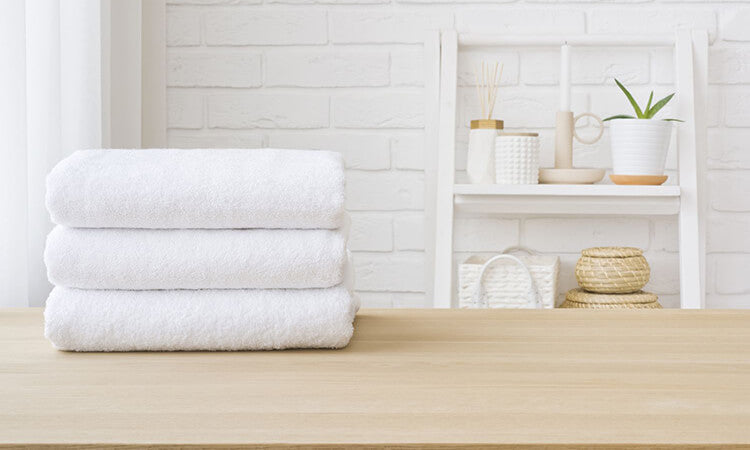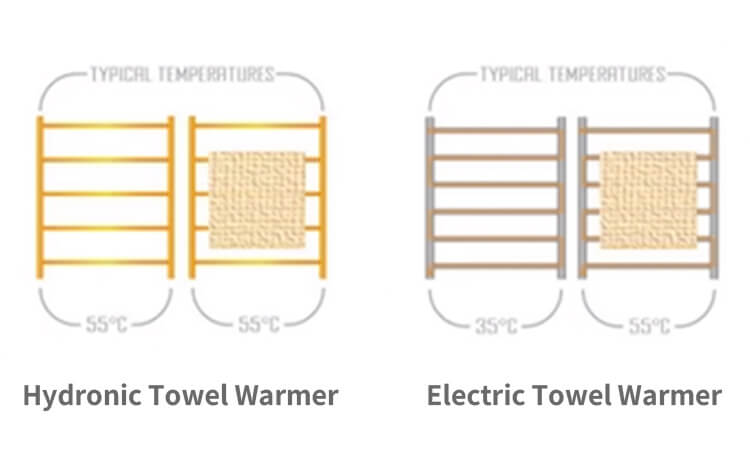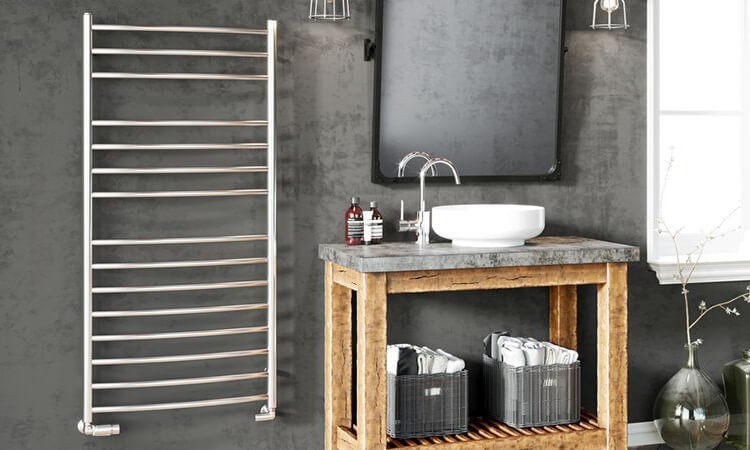When it comes to home design, the look of your bathroom is just as important as any other room. After all, no one wants a beautifully renovated home only to find an out-of-place, unattractive toilet. That’s true—but many people overlook an even more critical factor: functionality.
A toilet is one of the most used fixtures in a home, and its flushing performance plays a huge role in the overall user experience. Imagine a toilet that doesn’t flush properly—awkward, unpleasant, and frustrating for anyone who uses it. The good news? Choosing the right flushing system can prevent these issues entirely.
So while style and design matter, the flushing mechanism and overall performance are just as important. To help you make an informed choice, Giving Tree Home has put together a guide to 8 common toilet flushing systems, detailing their pros, cons, and ideal scenarios, so you can find the perfect fit for your home.
1. Gravity Flush — The Most Traditional and Common Method
How it Works
The gravity flush system is the most basic and widely used toilet design. Its operation is simple: it relies on the weight of water to remove waste.
Water is stored in the tank. When the flush handle or button is pressed, the drain valve opens, allowing water to flow rapidly into the toilet bowl under gravity. The force of the falling water pushes waste through the drain pipe, completing the flush.
Key Features
Advantages:
- Simple design with just a tank, drain valve, and flush mechanism, which keeps failure rates and maintenance costs low.
- Widely available, standard parts make repairs and replacements easy.
- Affordable, making it the go-to choice for budget-friendly toilets.
Disadvantages:
- Flush performance depends on tank height and water volume; if the tank is low, the flush may be incomplete.
- Traditional gravity flush toilets can use more water (typically 1.6–2 gallons per flush), making them less efficient than modern designs.
Ideal For
- Budget-conscious rental properties, dorms, or older homes.
- Households that need simple, reliable waste removal.
- Users who prioritize durability, ease of maintenance, and cost savings over advanced features.
2. Siphonic Flush — The Most Common Flush Type in U.S. Homes
How it Works
The siphonic flush system uses the “siphon effect” to remove waste efficiently. When you press the flush handle or button, the water splits into two streams: one flows evenly around the rim to clean the bowl’s inner walls, while the other rushes into the drain pipe at high speed, creating a vacuum.
This vacuum continuously “sucks” waste and water down the drain until the flush is complete. Once the flush finishes, the trapway refills with water, forming a stable seal that prevents odors from coming back up.
Key Features
Advantages:
- Continuous siphon action effectively clears waste, often eliminating the need for a second flush.
- Water trap (about 2–3 inches deep) blocks sewer odors effectively.
- Uses less water than traditional gravity flush toilets, typically 1.2–1.6 gallons per flush.
- Smooth water flow and gentle flushing make it quieter than direct-flush systems.
Disadvantages:
- If household water pressure is too low (below ~15 psi), the siphon may form slowly, reducing flush efficiency.
- Drain pipes are typically 1.5–1.75 inches in diameter; non-flushable items like wet wipes, hair, or paper clumps can cause blockages, and clearing them can be tricky.
Ideal For
- Standard apartments and single-family homes.
- Households prioritizing odor control and effective cleaning.
- Users who avoid flushing foreign objects and maintain good bathroom habits.
3. Washdown / Direct Flush — Common in Europe and Asia, Powerful Waste Removal
How it Works
The washdown flush system is known for its “direct, powerful flush.” These toilets feature a larger outlet and short, wide drain pipes. When you press the flush handle or button, water from the tank flows straight through a wide channel into the drain, using concentrated water force to push waste quickly into the main sewer line.
With a short and fast flush path, this system is essentially a “solve everything with water flow” design.
Key Features
Advantages:
- Large outlets (about 2 inches or more) combined with short, straight pipes handle most types of waste, even some harder-to-decompose materials, with a very low risk of clogging.
- Works well even with low or unstable water pressure, making it ideal for older buildings.
- Simple design with fewer parts makes maintenance easy and inexpensive.
Disadvantages:
- Traditional washdown toilets often use 1.5–2.5 gallons per flush, less efficient than siphonic or gravity systems.
- The powerful water flow can be noisy.
- With a trap depth of only about 1–1.5 inches, odor control is weaker, and poor sealing can allow odors to escape.
Ideal For
- Older homes or buildings with unstable water pressure.
- Families with children or situations where clogs from foreign objects are a concern.
- Users who want powerful flushing and aren’t as worried about water usage or noise.
4. Vortex / Tornado Flush — Efficient Cleaning and Water-Saving Upgrade
How it Works
The vortex, or tornado, flush system is an upgraded version of the traditional siphonic flush. It uses specially designed water guides to inject water into the bowl in a swirling, spiral motion.
When you press the flush handle or button, water sprays from multiple rim outlets. The centrifugal force creates a clockwise or counterclockwise vortex, pushing waste downward while enhancing the siphon effect. This stronger suction quickly draws waste into the drain, making flushing faster and more efficient.
Key Features
Advantages:
- Spiral water flow reaches every corner of the bowl, leaving almost no “dead zones” and easily removing stubborn residue.
- Centrifugal force combined with siphon suction improves flush efficiency by up to 30% compared to traditional siphonic toilets.
- Uses only about 1–1.3 gallons per flush while still providing effective cleaning.
- Rotating water flow reduces noise compared to direct-flush toilets and adds a modern, high-tech visual effect.
Disadvantages:
- Requires precise water guide components, making these toilets 20–40% more expensive than standard siphonic models.
- Clogged guide holes can reduce vortex effectiveness; hard water areas may require more frequent cleaning.
- Scale buildup from hard water over time can affect performance.
Ideal For
- Households looking for high-quality flushing performance and water savings.
- Users who value aesthetics and a high-tech bathroom experience.
- Homes with good water quality and easy access for routine maintenance.
5. Dual-Flush — The Most Practical and Water-Saving Choice
How it Works
The dual-flush system isn’t a separate type of flush—it’s an upgrade applied to gravity, siphonic, or washdown toilets. It features a two-stage flush mechanism designed to save water.
Most dual-flush toilets have either two buttons or a single dual-stage button:
- Half Flush: Releases about 0.8–1 gallon for liquid waste or small amounts of toilet paper.
- Full Flush: Releases about 1.2–1.6 gallons for solid waste.
This allows users to select the flush volume that fits their needs, achieving a kind of “water on demand” efficiency.
Key Features
Advantages:
- Can save more than 40% of water compared to traditional single-flush toilets, reducing household water bills over time.
- Compatible with multiple base flush systems, balancing flush power, noise, and maintenance preferences.
- Dual-button design is intuitive for all ages.
Disadvantages:
- More components than single-flush toilets, and lower-quality parts may lead to unresponsive buttons or leaking valves.
- If the dual-flush mechanism fails, the tank must be opened for inspection, making repairs potentially more costly than standard single-flush models.
Ideal For
- Environmentally conscious households focused on water conservation.
- Homes with high toilet usage looking to reduce water bills.
- Users seeking a balance between performance, cost, and water efficiency.
6. Tankless / Direct Flush — Space-Saving, Modern Solution
How it Works
Tankless toilets eliminate the traditional water tank and connect directly to the household water supply, relying on water pressure to flush.
They usually feature solenoid valves and flow-control systems. When you press the flush button, the solenoid valve opens, sending high-pressure water directly to the outlet to clear waste.
Some high-end models include built-in booster pumps to maintain strong flushing even under low water pressure.
Key Features
Advantages:
- Tankless design reduces toilet size by 15–20%, perfect for small bathrooms.
- Each flush uses only about 0.8–1.2 gallons, roughly 30% less than traditional tank toilets, and avoids bacterial growth in stagnant water.
- No tank height limitations, allowing flexible installation.
- Pressurized water typically clears waste 2–3 seconds faster than conventional tank toilets.
Disadvantages:
- Requires water pressure of at least 30 psi; otherwise, a booster pump is needed, adding to cost.
- No tank means there’s no stored water for backup.
- Relies on solenoid valves and control modules, making repairs more complex and expensive.
- Precision components and tankless design often make these toilets about 50% more expensive than traditional models.
Ideal For
- Small bathrooms or homes needing optimized space.
- Modern residences with stable water pressure (≥30 psi).
- Users prioritizing hygiene and minimal bacterial growth.
- Those who prefer sleek, contemporary bathroom design.
7. Pressure-Assisted Flush — The Most Powerful Tank-Based Solution
How it Works
Pressure-assisted flush systems include a sealed air-pressure tank inside the toilet tank. As the tank fills, air in the pressure vessel compresses, storing energy.
When you press the flush handle or button, the compressed air forces water into the bowl at high speed—typically 2–3 times the force of a standard gravity flush. Combined with a siphon design, this creates a “pressure impact + siphon suction” effect for extremely effective waste removal.
Key Features
Advantages:
- High-pressure water clears stubborn waste, even if the drain is slightly clogged, with minimal risk of blockage.
- Each flush uses only about 1–1.3 gallons, roughly 30% less than traditional washdown toilets, while providing stronger flushing power.
- Works effectively at low water pressure (~7 psi), making it suitable for older buildings or high-rises.
- Maintains consistent water levels after flushing, reliably preventing odors.
Disadvantages:
- Air release and high-speed water flow generate noticeable noise, about 5–10 dB louder than standard siphonic toilets.
- Pressure-assisted components typically need replacement every 5–8 years, with higher maintenance costs.
- More complex construction makes these toilets 30–50% more expensive than standard tank models.
Ideal For
- Low water pressure environments, such as high-rise apartments or older neighborhoods.
- Households that need powerful flushing and minimal clogging, and aren’t sensitive to noise.
- Commercial spaces—hotels, offices, or malls—where frequent, reliable flushing is essential.
8. Electric Smart Flush — Intelligent, Modern Household Choice
How it Works
Electric smart flush systems are a key feature of smart toilets, using built-in motors, sensors, and control modules to flush automatically.
Depending on the sensor type:
Motion sensor models: Infrared detects when a user leaves and flushes automatically.
Foot sensor models: A sensor on the toilet base triggers the flush with a light touch.
Advanced models can automatically adjust flush volume (half or full) and even allow remote control via smartphone apps, offering full smart management of your bathroom.
Key Features
Advantages:
- Hands-free operation reduces bacterial exposure and improves hygiene.
- Sensors optimize flush volume, saving 15–20% more water than manual dual-flush toilets.
- Can integrate with heated seats, warm-water cleaning, and deodorization for a premium experience.
- Some models store personal flush preferences for multiple family members.
Disadvantages:
- Requires a power source; manual backup can be less convenient.
- Smart components—motors, sensors, and control modules—typically cost around $400, with high-end models exceeding $1,400.
- Component failures usually require manufacturer service, leading to longer repair times and higher costs.
Ideal For
- Households seeking high-quality, convenient, and hygienic bathroom experiences.
- Homes with elderly, children, or users with limited mobility.
- Users who enjoy smart home appliances and want full home automation integration.
Ending
A toilet flush is more than just a mechanism—it reflects how we balance efficiency, convenience, and sustainability in daily life. Choosing the right flushing system is an opportunity to rethink a space we often take for granted.
Modern toilets demonstrate that innovation doesn’t have to be flashy; small improvements—like a vortex swirl, dual-flush option, or sensor-activated flush—can significantly improve hygiene, save water, and enhance comfort. At the same time, understanding your household’s specific needs ensures that technology serves practical purposes, not just novelty.






